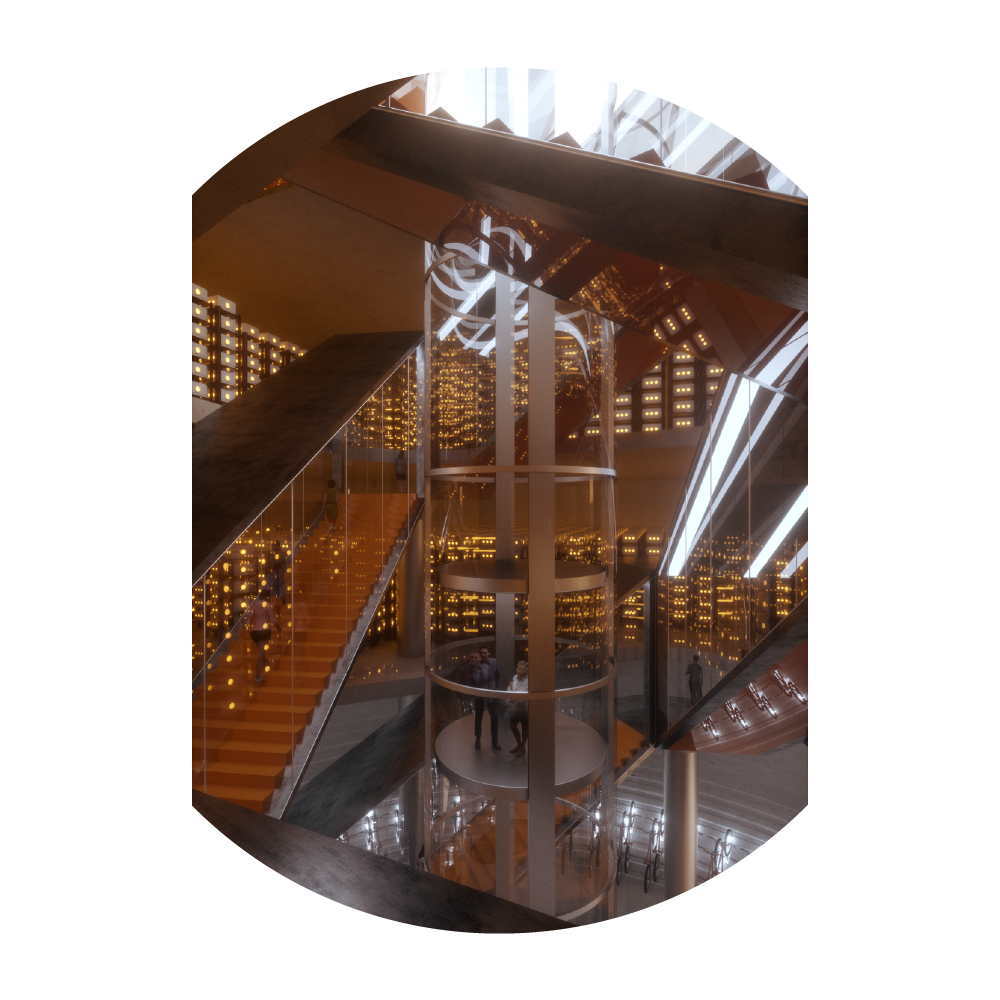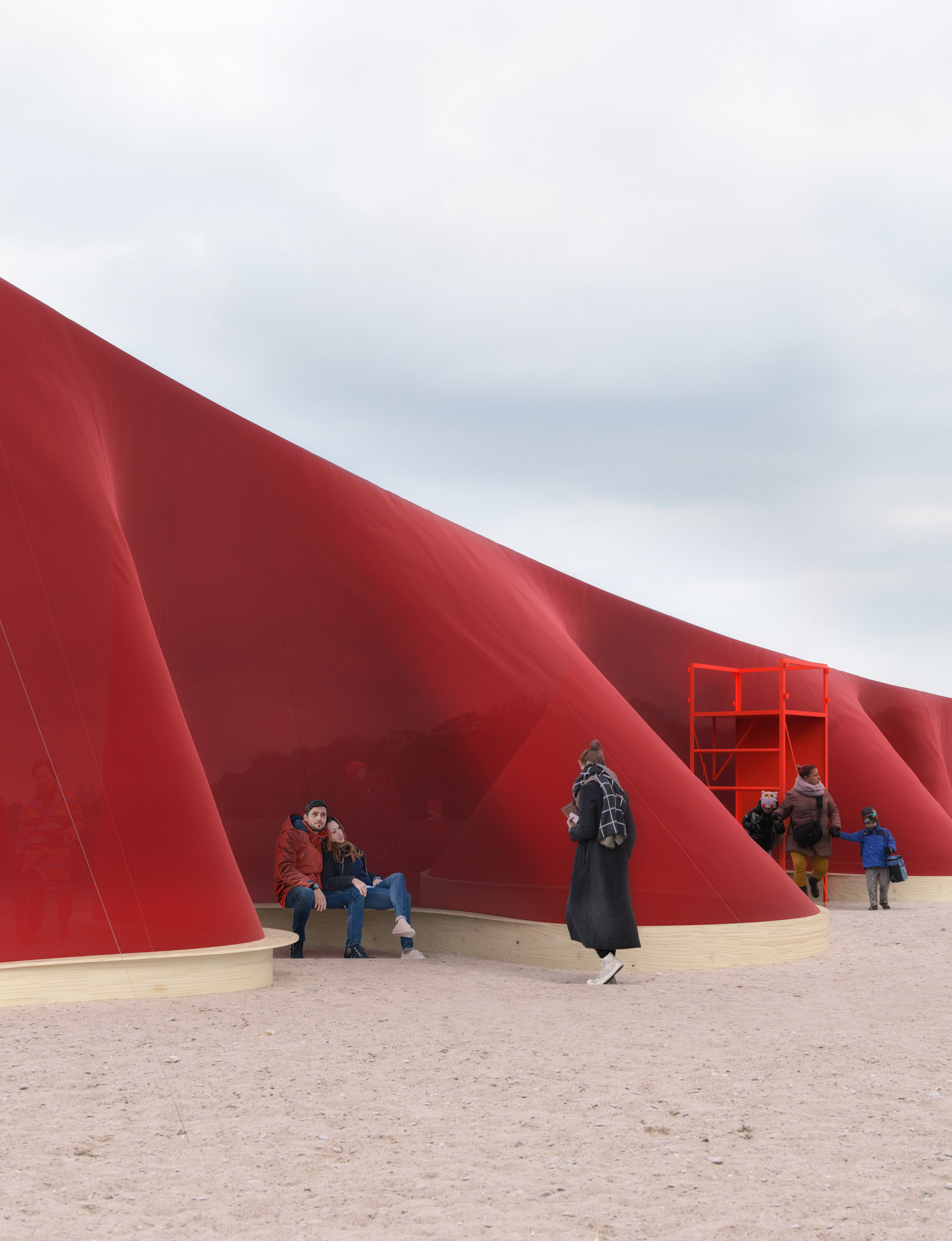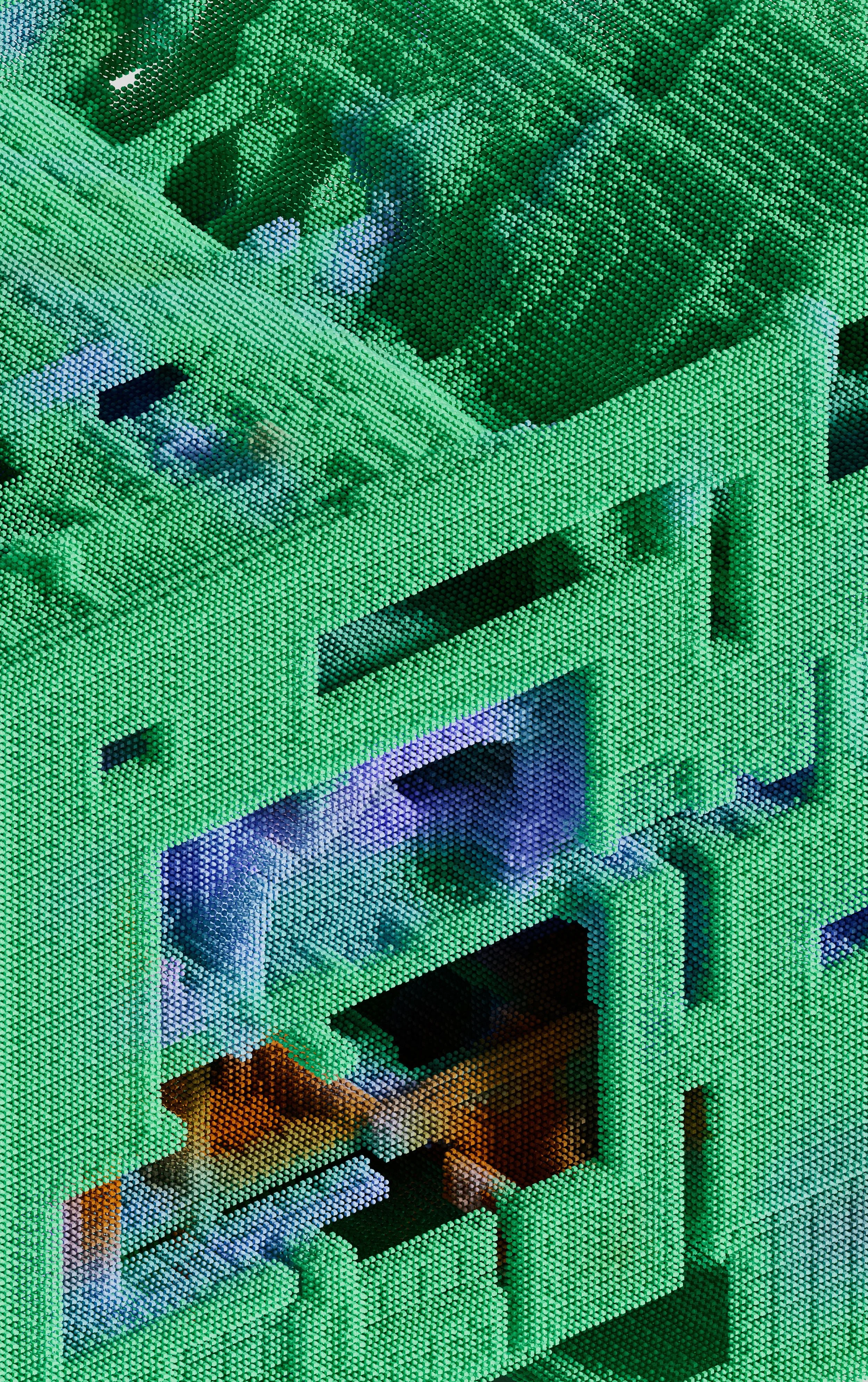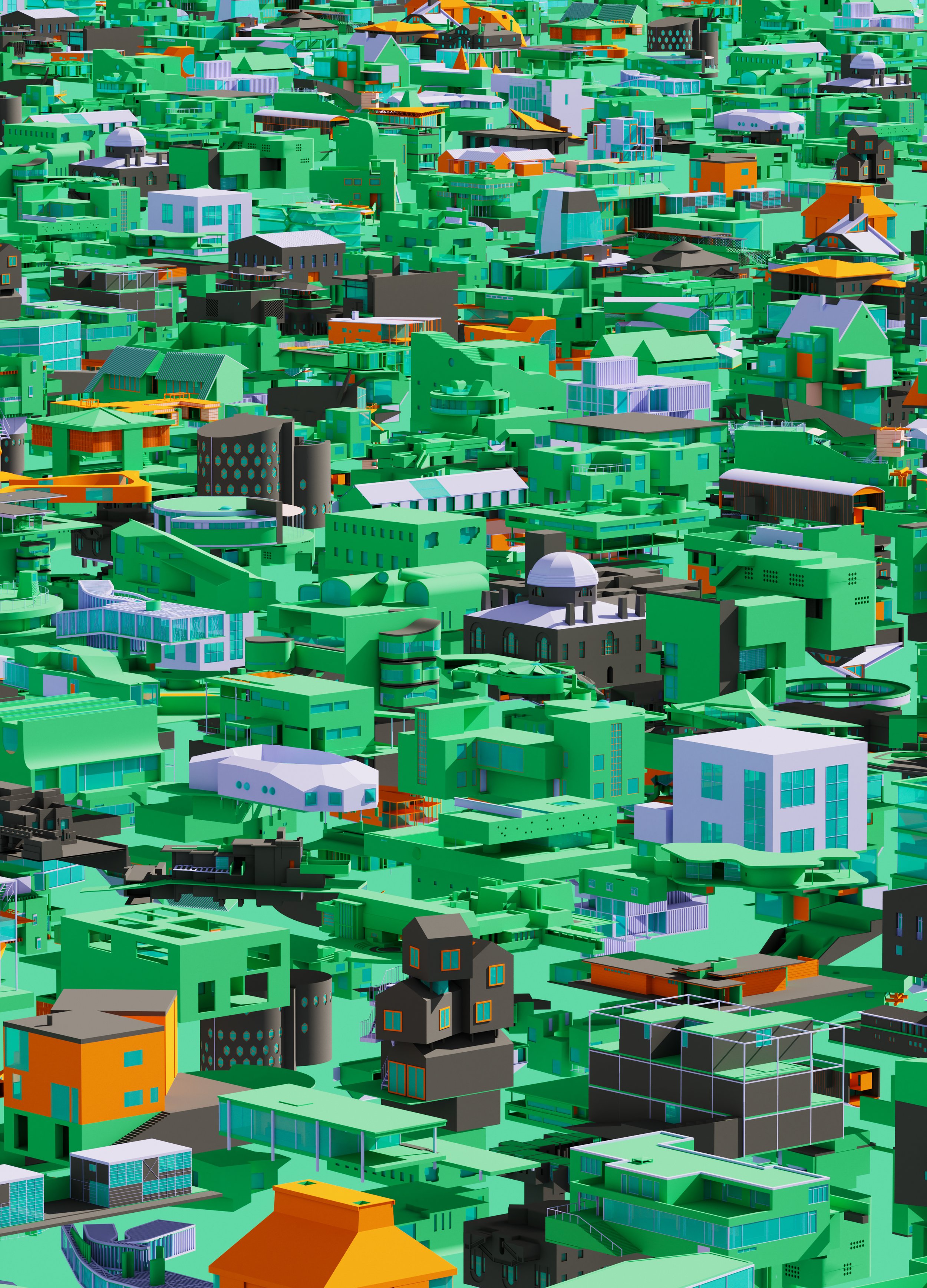




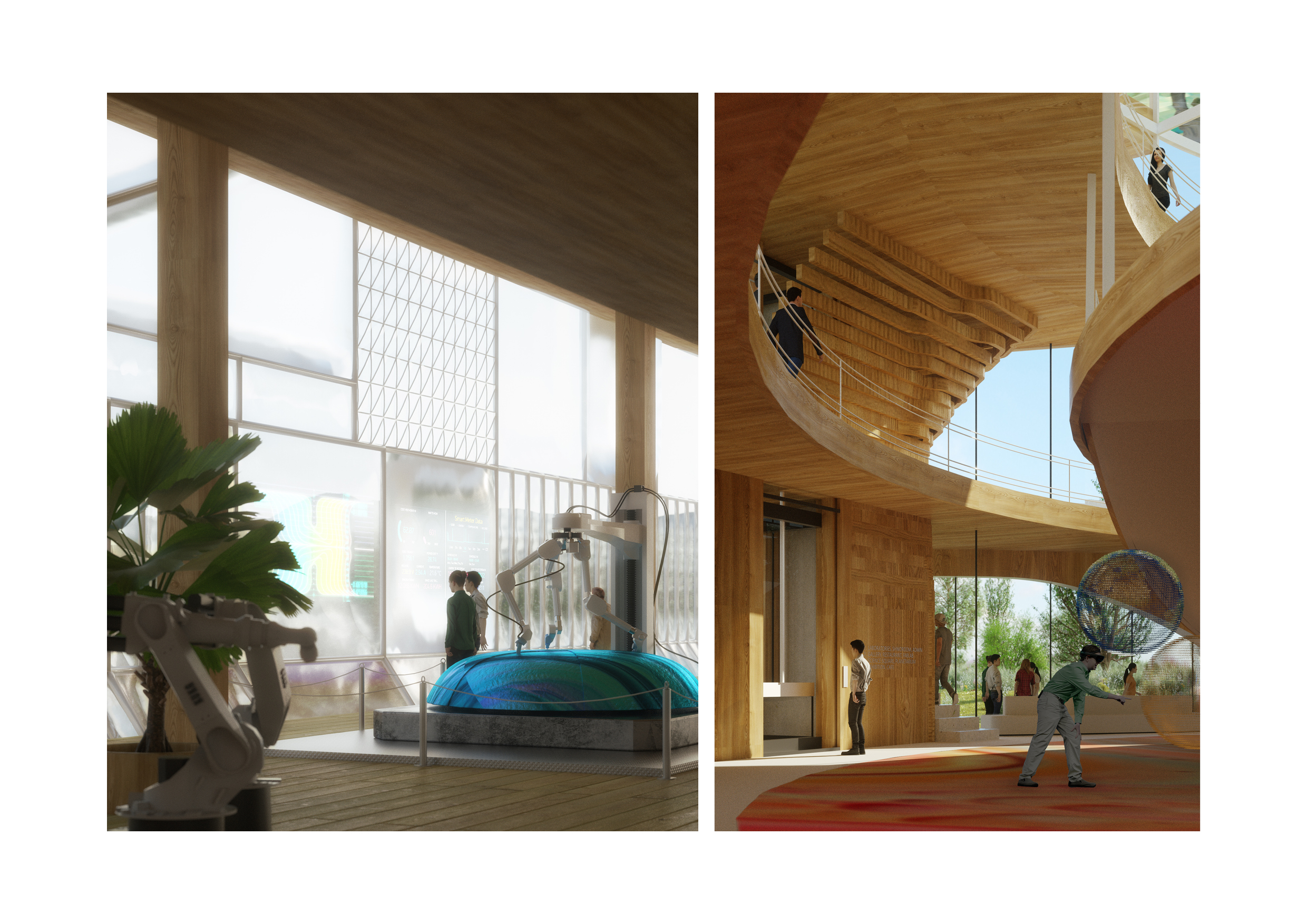




SCIENCE SQUARE
A sustainable, breathing hub for Slovenian science
The proposal relies on three design concepts: 1) integration with the existing site context by raising the landscape into a plinth – the “Science Square”, 2) the building itself becomes a living “breathing” exhibition of science and sustainability, and 3) the integration of Augmented Reality throughout the structure to create a bridge between the physical architecture and the digital analysis and information which is collected by the ‘smart building’ systems we incorporate.
The creation of a raised Science Square allows for demonstration value in the both the integrated nature of the landscape with the site, and through creating formal and spatial differentiation with key programmatic clusters – “Pearls” resting atop of the raised landscape. The building itself – spatially and architecturally separated into small clusters becomes a series of exhibitions in itself. This is especially evident in its architectural facade treatment and approaches towards sustainability. The Pearls are wrapped in ETFE panels: super-lightweight, 100% recyclable fabric structures which inflate and deflate as well as change opacity to react to environmental conditions in real time. The building is breathing to create more efficient energy and spatial use within the structure by reacting with its surroundings. In addition, to improving the user comfort in an automated and efficient way (thermal, lighting and humidity), this system invites visitors to watch the building move in mesmerizing yet calculated and sustainable ways.
The entire building envelope is constantly monitoring, reacting and collecting data – one important aspect of an overall monitoring system and integrated RES that makes our “smart building” more sustainable and efficient. It is important that the building be able to describe itself to both those who will use its data for research and also to visitors who come to see it. For this reason, the pathways throughout the design are not only graphic and aesthetic representations but they serve as ‘trackers’ – specifically designed to trigger Augmented Reality content that can react to the spaces they inhabit, the exhibits of the Science Center and to the real time information of our smart-building system


























